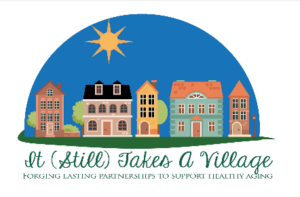 I was a caregiver for my parents long before I realized there was a name for what I was doing. I started out helping them by running errands, doing chores, and maintaining the interior and exterior of their home. Then it grew to analyzing supplemental healthcare insurance choices that were best for them, advocating on their behalf with doctors, hospitals and rehab centers, making healthcare decisions, driving them to appointments, managing finances, collecting and organizing prescriptions, modifying their home to be more conducive to their physical and mental abilities and on and on it went. Keeping them independent and safe in their own home so they could continue to age in place was always the goal.
I was a caregiver for my parents long before I realized there was a name for what I was doing. I started out helping them by running errands, doing chores, and maintaining the interior and exterior of their home. Then it grew to analyzing supplemental healthcare insurance choices that were best for them, advocating on their behalf with doctors, hospitals and rehab centers, making healthcare decisions, driving them to appointments, managing finances, collecting and organizing prescriptions, modifying their home to be more conducive to their physical and mental abilities and on and on it went. Keeping them independent and safe in their own home so they could continue to age in place was always the goal.
It got me to thinking…
Was I the only one going through this process with their parents? How do people around the world care for their parents? So off to my laptop I went to find out.
“Filial Piety” (in Confucianism) is the important virtue and primary duty of respect, obedience, and care for one’s parents and elderly family members. In several Asian countries, there are laws which state adult children of elderly parents can never abandon them and must visit on a regular basis or be subject to sanctions ranging from fines to imprisonment. In Latino and Mediterranean cultures, more often than not, multiple generations live together under one roof. The elders take on the responsibility to care for the youngsters of those able to work outside the home.
Does that mean our only choices are to be forced by law to care for our parents or have them move in with us? There’s always Assisted Living but that is not the choice of 90% of American seniors (according to AARP). Most seniors in the U.S. wish to remain in their home or Age in Place.
I think the Swedes have got it right.
In 1992, Sweden implemented the Adel Reform which shifted responsibility for the elderly from a huge centralized, bureaucratic system to local communities, care managers and workers. They provided financial incentives to hospitals to reduce the amount of necessary hospital visits and reoccurring hospital stays. They implemented the equivalent to our Meals on Wheels. They placed the entire emphasis for elderly care on community involvement, public accountability and empowerment of citizens. And the result? Sweden has been able to keep over 90% of their elderly population aging in place. What a great concept!
Next month I’ll be attending the 2016 Maine Summit on Aging in Augusta. I’m looking forward to hearing about what our State’s plans are to care for our elderly now and in the future. For more info on this summit, hosted by the Maine Council on Aging, click on the It Still Takes A Village photo above.
As for me, my caregiving duties were done out of love…pure, emotional, unlimited heart filling, intense love for both my parents that provided me with the honor to help them age in place for a collective total of fifteen years. And I utilized every tool imaginable to do it! More on that in later blogs.
So how about you? How are you supporting your aging parents, family members and neighbors so they can age in place? Send me your comments and let me know.
Cheers,
Marcia